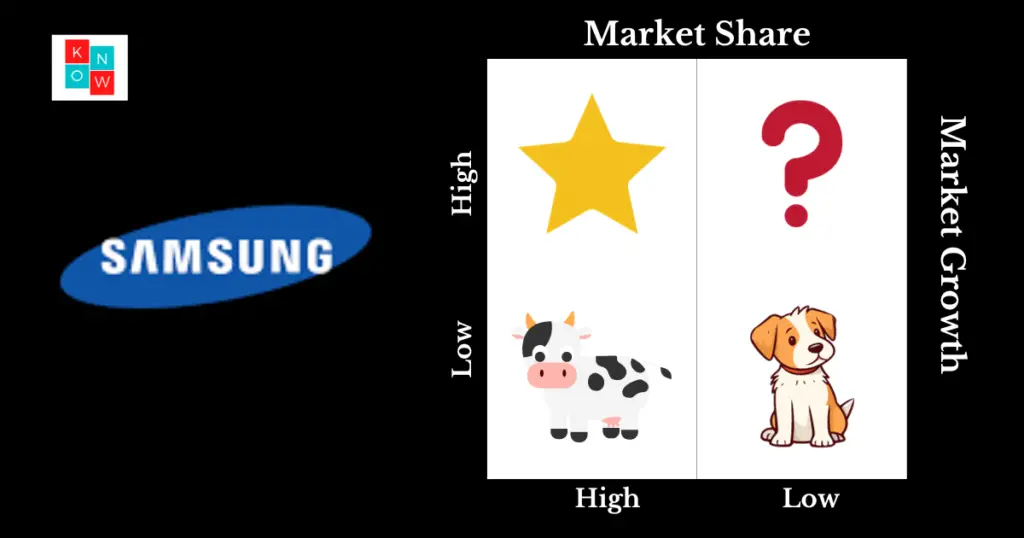Analyzing Samsung’s Product Portfolio with the BCG Matrix
In the highly competitive consumer electronics industry, Samsung has managed to establish itself as a global leader. One of the key factors behind Samsung’s success is its diverse product portfolio. In this blog post, we will explore Samsung’s product portfolio using the BCG Matrix, a strategic tool that helps businesses analyze their product offerings and make informed decisions about resource allocation and growth strategies.
What is the BCG Matrix?

The BCG Matrix, developed by the Boston Consulting Group, is a popular strategic management tool used to evaluate a company’s product portfolio. It categorizes products into four quadrants based on their market growth rate and market share, providing insights into their position within the market and their potential for future growth.
BCG Matrix of Samsung

Samsung's Stars
Stars are products with a high market share in rapidly growing markets. In Samsung’s product portfolio, we can identify smartphones like the Galaxy S and Note series as stars. These products have a significant market share in the highly competitive smartphone market, which is experiencing rapid growth due to increased consumer demand. Samsung invests heavily in research and development, marketing, and innovation to maintain and grow its market share in this segment.
Samsung's Cash Cows
Cash cows are products with a high market share in a low-growth market. Samsung’s cash cows include its range of home appliances, such as refrigerators, washing machines, and air conditioners. These products have a stable customer base and generate consistent revenue for the company. While the market for home appliances may not be growing rapidly, Samsung leverages its strong brand reputation and customer loyalty to maintain its market share and profitability in this segment.
Samsung's Question Marks
Question marks, also known as problem children or wild cards, are products with a low market share in a high-growth market. In Samsung’s case, we can identify emerging technologies and product categories, such as virtual reality (VR) devices and smartwatches, as question marks. These products have the potential for significant growth but face fierce competition and uncertain market acceptance. Samsung carefully evaluates the growth potential of these products and allocates resources accordingly, making strategic decisions to either invest and nurture them or discontinue them if they fail to gain traction.
Samsung's Dogs
Dogs are products with a low market share in a low-growth market. In Samsung’s portfolio, we can identify certain product lines that have become less popular over time or face strong competition from other brands. These products may not generate significant revenue or contribute to Samsung’s overall growth strategy. However, Samsung may still choose to maintain a presence in these segments to cater to specific customer needs or leverage synergies with other product lines.
Conclusion
The BCG Matrix provides valuable insights into the performance and potential of Samsung’s product portfolio. By categorizing products into stars, cash cows, question marks, and dogs, Samsung can make informed decisions about resource allocation, growth strategies, and product development. By leveraging its stars and cash cows, Samsung can continue to dominate in its established markets while carefully managing its question marks and evaluating their growth potential. By regularly assessing and adjusting its product portfolio using tools like the BCG Matrix, Samsung can stay competitive and drive sustainable growth in the ever-evolving consumer electronics industry.




